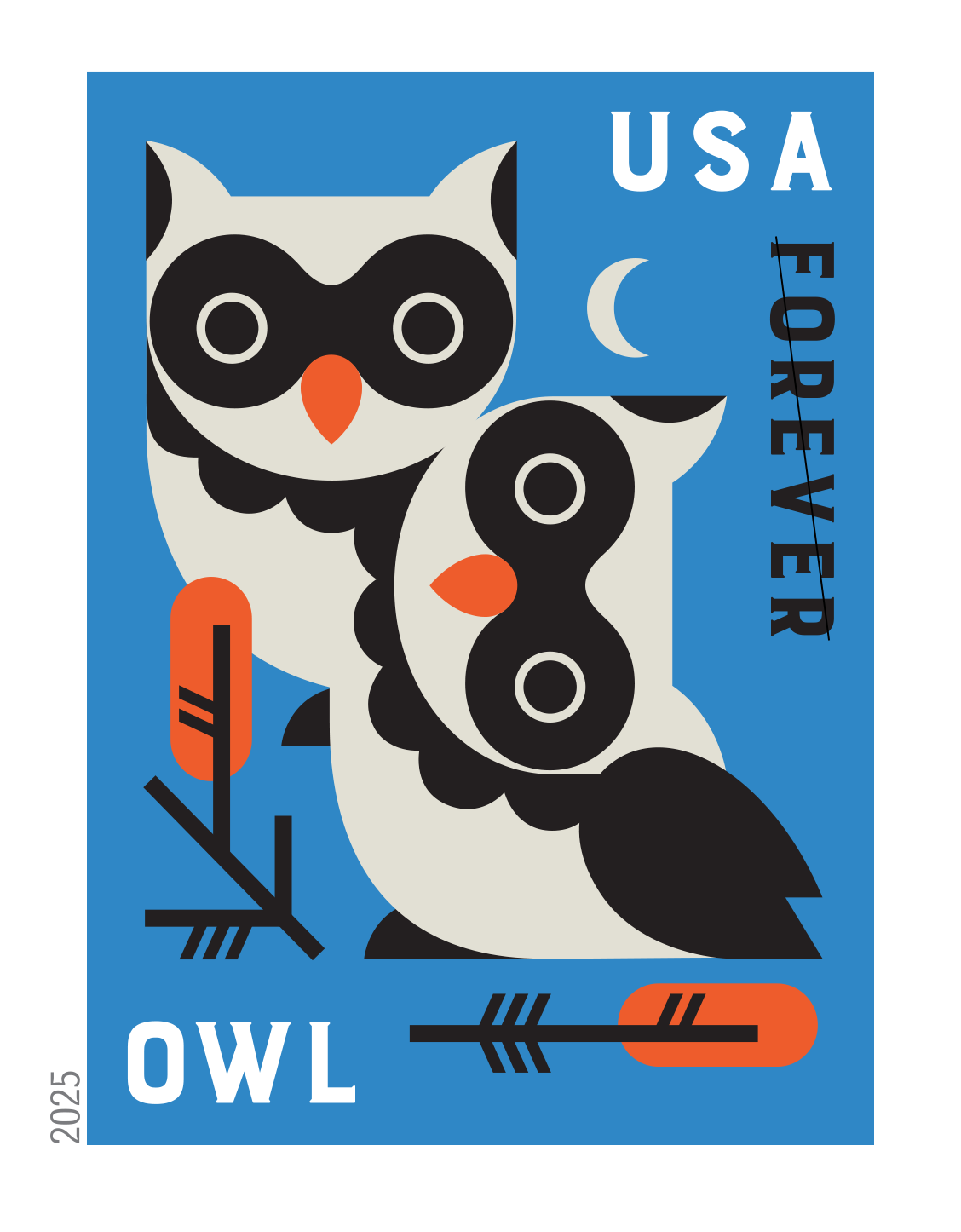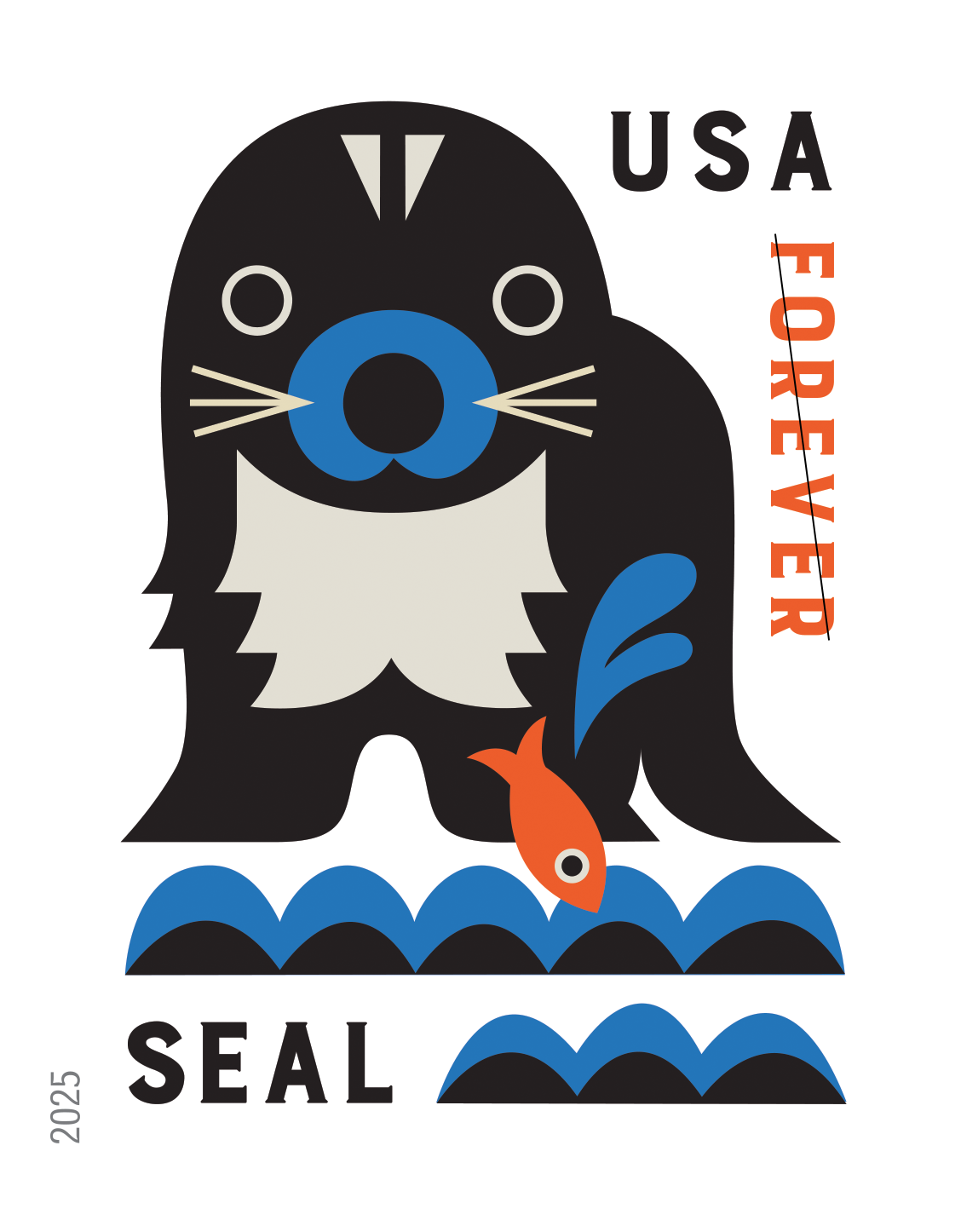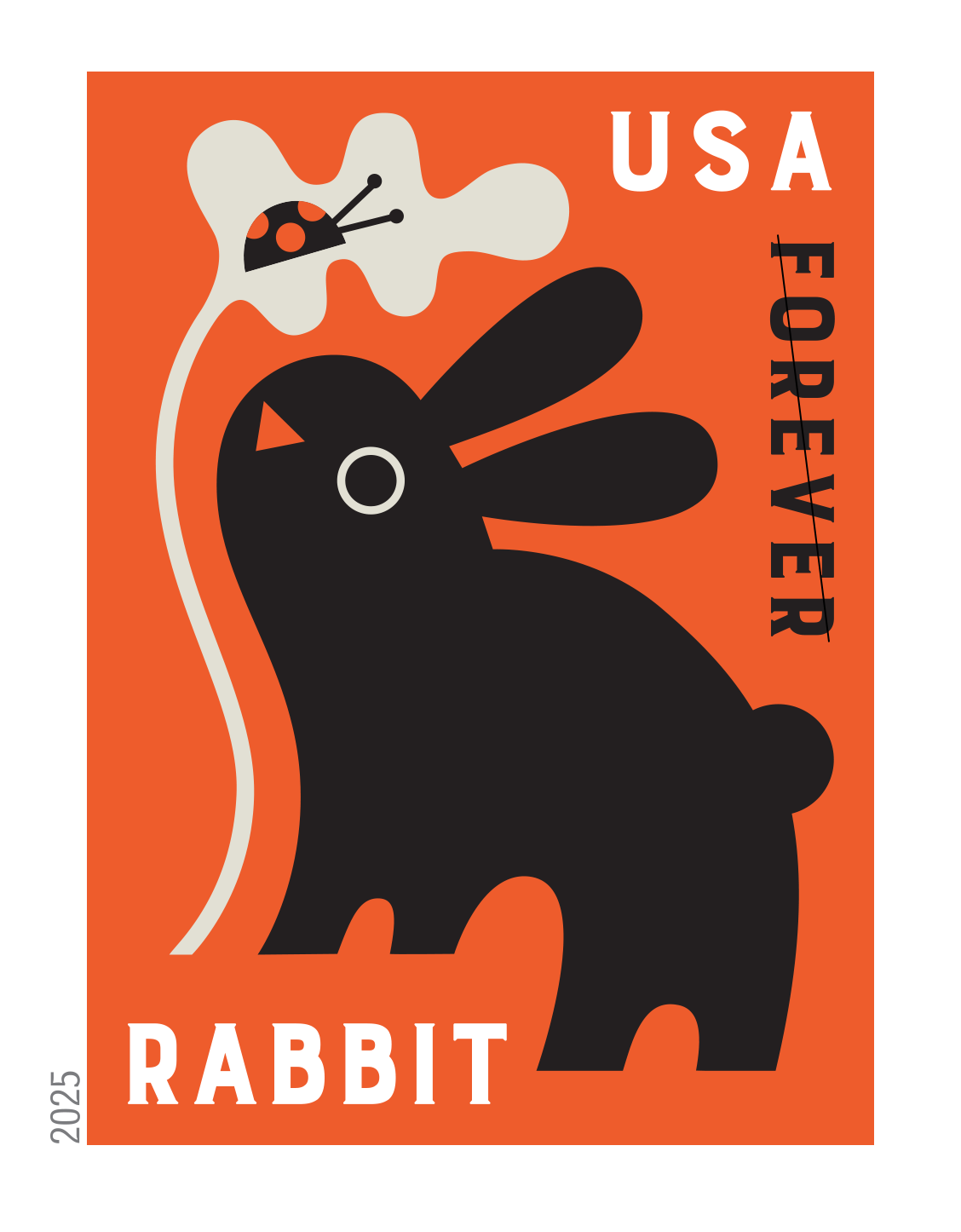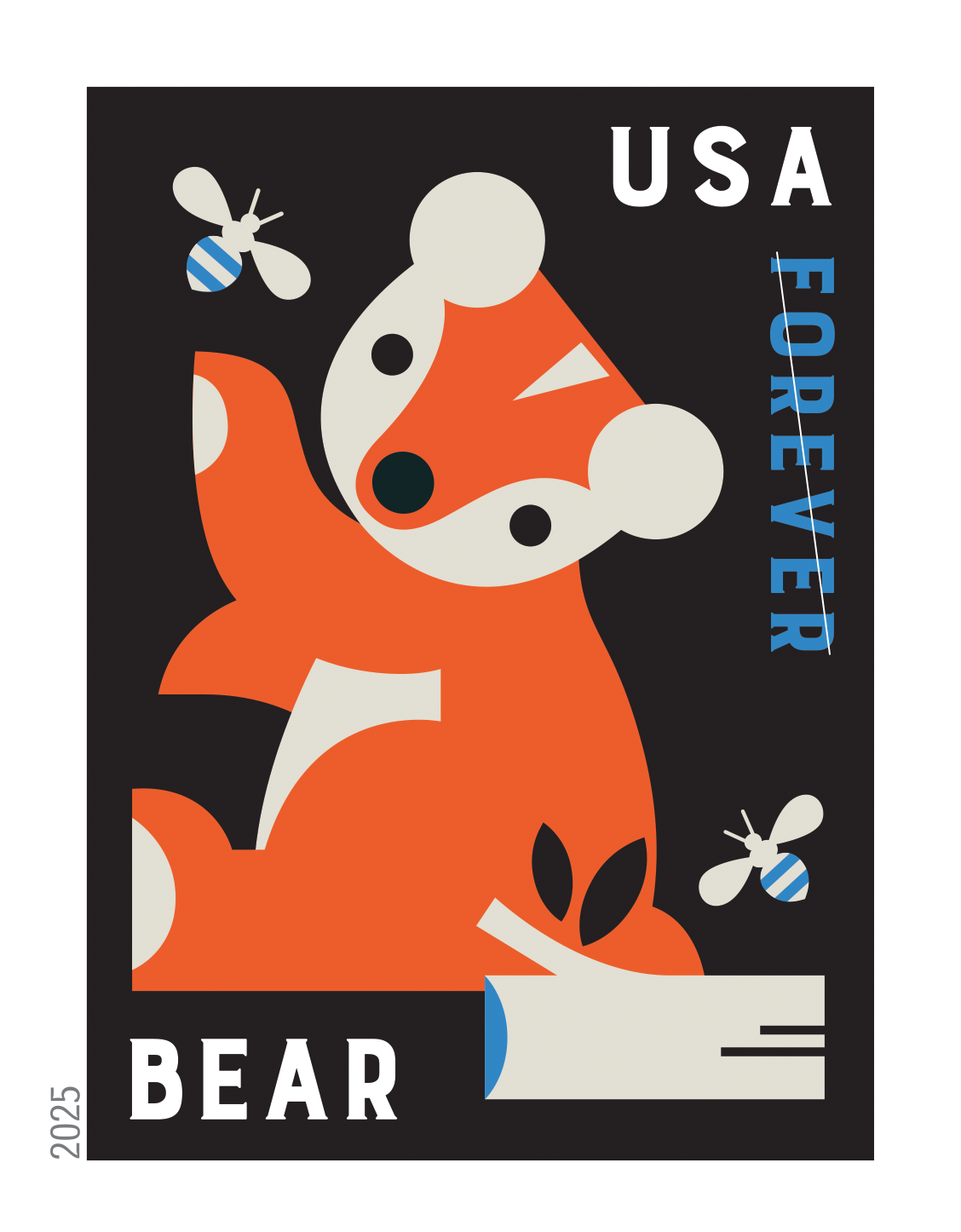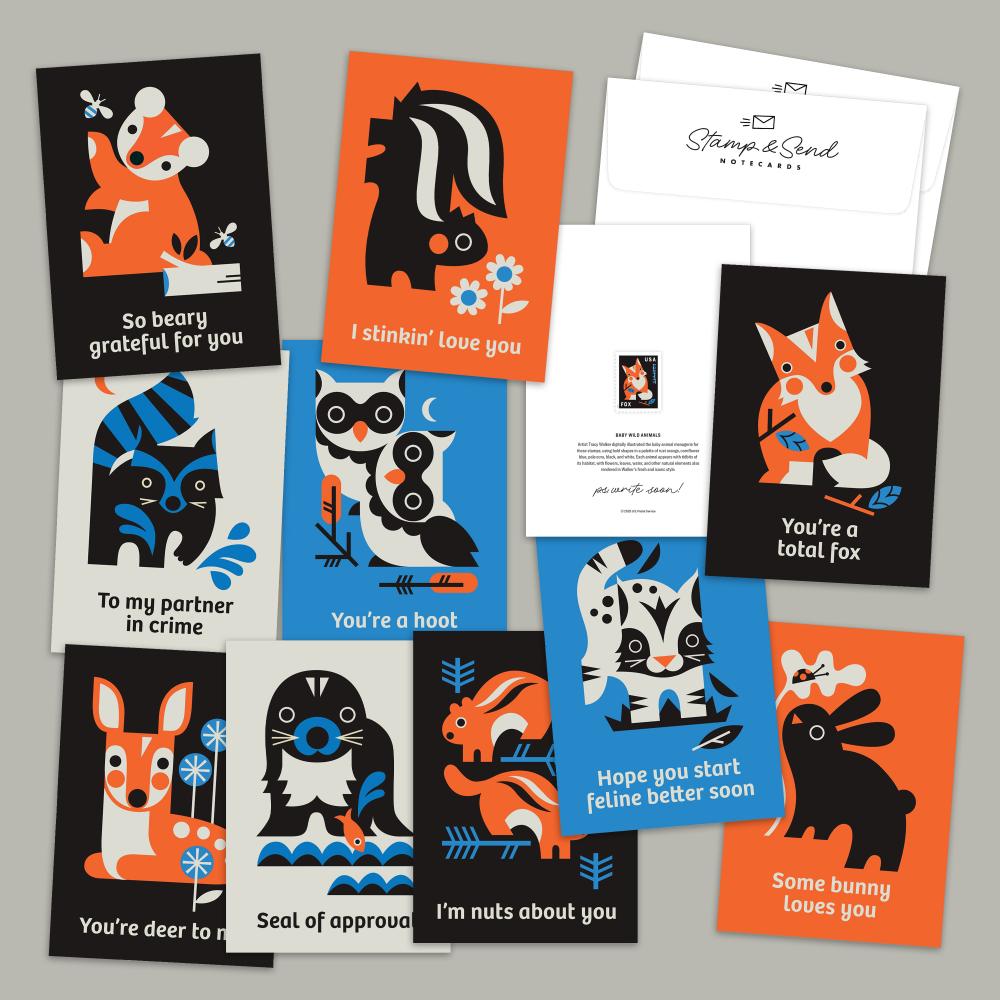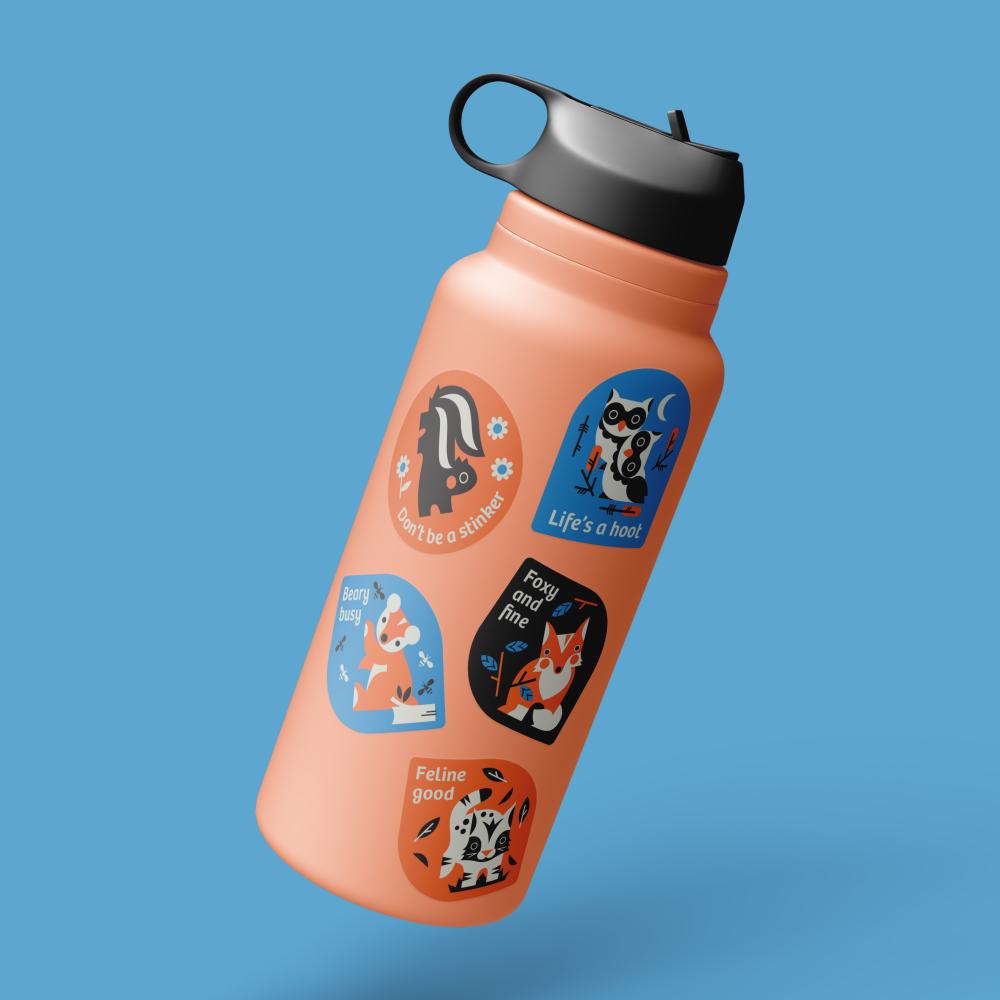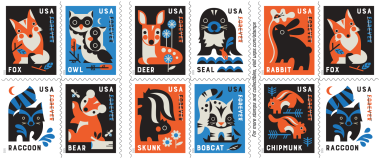
About This Stamp
The cute appearance of animal babies reminds us of an innocent, vulnerable time of life when the world is new and full of wonder. Eye-popping and endearing graphic illustrations represent the young of 10 creatures that range widely across the United States: fox, owl, deer, seal, rabbit, bear, skunk, bobcat, chipmunk, and raccoon. Baby Wild Animals stamps are available in a booklet of 20 stamps.
The clever fox can prosper in remote wilderness and urban areas. A fox vixen generally bears four or five kits as winter turns to spring. The family stays together through the summer, and the mother removes her frisky young from harm’s way, carrying each kit by the scruff of the neck.
Young owls develop the soft wing feathers that they will need to fly in silent stealth. The owlets flap their wings to practice for flight. A mother signals her fledglings with calls and bill-snapping. Owls rely on their keen senses of sight and hearing for night hunting.
Minutes after birth, a deer fawn can walk on its spindly legs. The young are often left alone by their mother, who makes brief visits several times a day to nurse. Virtually scent-free, fawns keep still and quiet. Dappled camouflage also makes detection difficult.
A seal pup gains weight quickly on its mother’s rich milk. The resulting thick layer of blubber will help the pup survive in the cold ocean. The young seal knows to close its nostrils and ear openings as it learns to make deep dives to feed on fish and other sea creatures.
Helpless at birth, young rabbits develop quickly in a shallow den padded with grass and their mother’s soft fur. After a few weeks nursing, the active little bunnies nibble grasses and herbs. A young rabbit develops long hind legs to allow for quick escapes from approaching danger.
A mother bear gives birth during winter torpor, a hibernation-like time of rest. Cubs, often twins, grow quickly on milk and an omnivorous diet including roots, berries, honey, insects, fish, and other meat. Fairly self-sufficient at about six months, a cub might stay with its mom for up to three years.
Baby skunks are typically born inside a hollow log, a leafy nest, or a burrow. The distinct striped or spotted pattern is evident on bare skin before fur grows in. Growing skunks practice foot-stomping and handstands — warnings to alert wise predators before the infamous stinky spray ever becomes necessary.
A bobcat mother, shy and elusive, typically bears two or three kittens in a cave or a hollow log. Mom brings rodents and birds as meals. As the kittens grow, she teaches them to stalk and pounce on prey. They may stay with her for as long as a year.
Chipmunks, cute and curious, are small, striped members of the squirrel family. The young are born in a nest within extensive underground burrows dug or inherited by their families. After a month, the pups emerge to eagerly scamper about the ground during the spring and summer.
A mother raccoon tends to her newborns, often in a nest high in a tree. Once they are ready to explore — or whenever caution demands it — she might carry them to a new nest on the ground. They become more independent in summer, yet the raccoon mom watches over her young for a year or so.
Tracy Walker was the stamp designer and artist. Greg Breeding was the art director.
Baby Wild Animals are being issued as Forever® stamps. These Forever stamps will always be equal in value to the current First-Class Mail® one-ounce price.
Stamp Art Director

Greg Breeding
Greg Breeding is a graphic designer and principal of Journey Group, a design company he co-founded in 1992, located in Charlottesville, Virginia. He was creative director until 2013, at which time he began serving as president and continued in that role through 2023.
Breeding’s fascination with modernism began while studying design at Virginia Commonwealth University. His affinity with the movement continues and motivates his ongoing advanced studies at the Basel School of Design in Switzerland most every summer.
As an art director for postage stamp design since 2012, Breeding has designed more than 100 stamps covering a diverse array of subjects, from Star Wars droids and Batman to Harlem Renaissance writers and the transcontinental railroad.
His work has been recognized in annual design competitions held by Graphis, AIGA, PRINT magazine, and Communication Arts.
Breeding lives in North Garden, Virginia, with his wife and enjoys nothing so much as frolicking on the floor with his grandchildren.
Stamp Artist, Stamp Designer

Tracy Walker
Born in England, Tracy Walker has been creative since childhood. Her education focused on fine art, illustration, and graphic design. She was recognized with high honors from her school’s illustration department upon graduation from Sheridan College, Ontario. She soon began her career in book design, launching her freelance illustration career a few years later.
Walker’s iconographic illustrations provide eye-catching and endearing embellishment to a wide range of publications and products. Her infographics and other artwork, rendered in bold shapes of solid colors, have graced publications including the New York Times. Her logos and illustrations have also appeared on product labels, notebooks and cards, mugs and tee shirts, even tissue boxes. Since starting her career in the 1990s, Walker’s growing client list has come to include Hallmark, Ikea, Papyrus, Prada, Target, teNeues, Trader Joe’s, and many others. Her imagery provided the design basis for Canada Post’s Year of the Rabbit stamp in 2011, which won top honors from the Design Exchange in Toronto.
The artist often creates her illustrations by digitally layering shapes, a method she likens to the process of crafting her playful paper-cut sculptures. Walker’s numerous local explorations and globetrotting voyages nourish her lifelong love of nature, a zeal clearly reflected in dynamic depictions of flora and fauna seen in so many of her designs.
Walker lives in Uxbridge, Ontario, dubbed the “Trail Capital of Canada.”
The Baby Wild Animals stamp booklet (2025) is her first project for the U.S. Postal Service.
